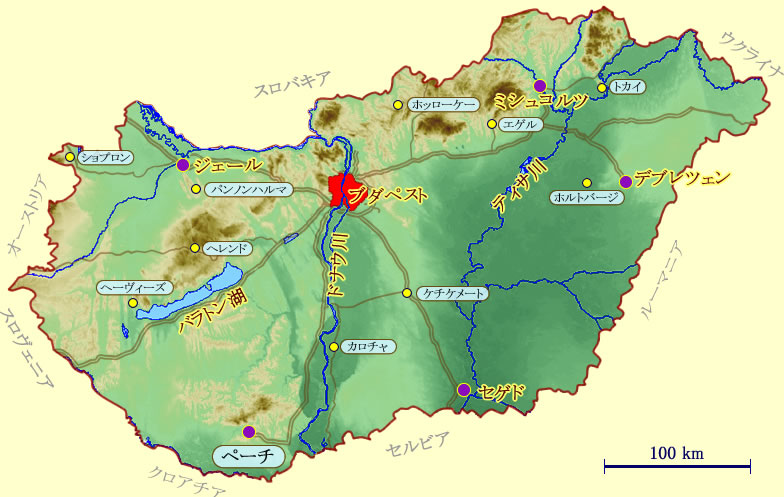Life Tips & Miscellaneous Travel and History Zen Philosophy and History Art and Sport Navigation of this blog
The country that could not go to the street – Hungary
This blog is based on Ryotaro Shiba’s “Kaido yuku” (On the Road), in which he describes countries in Japan and abroad that he has visited with great interest. In his Tamna Travels, he mentions that he would like to visit the Mongolian Plateau, the Pyrenees, the island of Ireland, and the Hungarian Plateau as countries he would like to visit abroad. He also wrote about the Pyrenees in “Kaido yuku: Travels in Mongolia,” “Kaido yuku: Nanban no Michi (1): Xavier and the Basque Country” “Kaido yuku: Nanban no Michi (2): Spain and Portugal” and about Ireland in “Kaido yuku: Travels in Ireland (1): Travels in Ireland” and “Irish Road Trip (2): Travels in Ireland“, respectively.
In the previous article, we discussed Nichiren and Kuonji Temple (Yamanashi Prefecture). In this article, I would like to describe Hungary, which he was not able to visit.
Hungary
In the aforementioned “Kaido yuku” Tamna travelogue, Ryotaro Shiba has the following to say about Hungary.
Hungary is a distant relative of ours in terms of language. The Uralic-speaking members of the Ural-Altaic language family nomadically drifted westward, reaching the Hungarian plains and becoming part of European civilization.
The wiki gives the following brief description of Hungary
A republic in Central Europe. Landlocked country surrounded by Austria and Slovenia to the west, Slovakia to the north, Ukraine and Romania to the east, Serbia to the south, and Croatia to the southwest. The capital is Budapest. Basically, it is considered Central Europe, but historically it has been classified as Eastern Europe. Most of the country is gently hilly, with fertile farmland in the eastern and southern plains, which are fed by the Danube River and other rivers.

Hungary’s land area is the plains of the Carpathian Basin, which stretches at the foot of the beautiful Carpathian Mountains.

The center of the country, known as the Hungarian Plain or Hungarian Basin, is roughly bisected by the Danube River, which flows through the center, with a large tributary, the Tisza River, to the east.

In the western part of the country, there is Lake Balaton, one of the largest lakes in Europe, and hot springs are gushing out all over the country, and public bathhouses have been built and used for a long time.

Budapest, the capital city, is considered one of the most beautiful cities in Europe and is home to various historical relics.

For this reason, Hungary has not only been used as a filming location for various movies, but also as a doubles location for other cities around the world, such as Rome, Moscow, Paris, and Prague.
History of Hungary
In ancient times, Hungary was called Pannonia and was inhabited by Pannonians, Dacians, and others. In the 1st century B.C., it was occupied by Rome and incorporated into the province Illyricum.
In the late 4th century, the Huns (said to be related to the Mongolian Xiongnu), mentioned in “History of the Silk Road and Plains” invaded Pannonia, and in 433 AD, the Western Roman Empire granted them control of Pannonia, which was the first independent state with Hungary as its main territory (including parts of present-day Bulgaria and Romania). The first independent state with Hungary as its main territory (including some parts of present-day Bulgaria and Romania) was established by the Huns.

At the end of the 10th century, he founded the Kingdom of Hungary (Aalpad dynasty), a member of the Catholic kingdoms of Western Europe, and the Kingdom of Hungary eventually developed into a major power with extensive control over Transylvania, Vojvodina, Croatia, and Dalmatia.
Around 1400, Hungary began a series of wars with the Ottoman Empire, and by the mid-1500s, the Ottomans had divided and controlled the southeastern and central two-thirds of the country. In the mid-1500s, the Ottomans took control of the southeastern and central two-thirds of the country, and Habsburg Austria took control of the northwestern third, which became the front line between the two empires.

When the Ottoman Empire was defeated in the Second Siege of Vienna in 1683 and retreated militarily, Hungary was ceded to Austria, and for Hungary, the ruler simply changed to the Habsburgs, which often led to repeated movements for independence.
Thereafter, a capitalist economy developed under the system of the Austro-Hungarian dual empire, and nationalism was on the rise, but Hungary was defeated in World War I, separated from Austria, and the Astor Revolution of 1918 led to the establishment of the People’s Republic of Hungary.
From the late 1930s, Hungary began to cooperate with Nazi Germany, and in World War II, it joined the Axis powers in the war against Germany and the Soviet Union, fighting as an Axis power until its defeat on May 8, 1945, when the remaining Hungarian military units surrendered with the fall of Nazi Germany.

In the late 1980s, the Hungarian Democratic Movement was launched, and in February 1989, the article stipulating party leadership was removed from the constitution. In May, the iron curtain on the western border with Austria was removed and the border was opened. This triggered a flood of East German citizens seeking asylum in West Germany to flood into Hungary, triggering a pan-European picnic and serving as a major trigger to end the Cold War.
Today, Hungary is one of the western states that is a member of NATO and the European Union.

In the next article, we will discuss our trip to Taiwan.


コメント